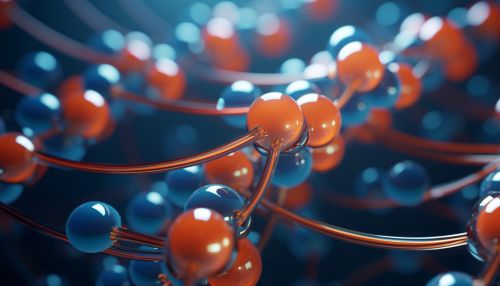Advances in Bioresponsive Drug Delivery Systems
Introduction
Bioresponsive drug delivery systems (BDDS) are a subset of drug delivery systems that are designed to release their therapeutic payload in response to specific biological triggers. These systems have gained significant attention in recent years due to their potential to improve the efficacy and safety of drug therapies by ensuring that the drug is only released at the desired site and time.
Biological Triggers
Biological triggers can be broadly classified into two categories: endogenous and exogenous. Endogenous triggers are naturally occurring in the body and include changes in pH, temperature, enzymes, and specific biomolecules. Exogenous triggers, on the other hand, are externally applied and include light, ultrasound, magnetic fields, and electric fields.
Endogenous Triggers


Endogenous triggers are particularly attractive for BDDS as they can provide a high degree of specificity and control over drug release. For example, changes in pH can be used to trigger drug release in areas of the body that have a different pH than the surrounding tissues, such as tumors or inflamed tissues. Similarly, enzymes that are overexpressed in certain diseases can be used to selectively release drugs in the diseased tissues.
Exogenous Triggers
Exogenous triggers offer the advantage of being able to externally control the timing and location of drug release. For example, light-sensitive BDDS can be activated by specific wavelengths of light, allowing for precise spatial and temporal control over drug release. Similarly, magnetic fields can be used to guide magnetic nanoparticles loaded with drugs to the desired site, and then trigger drug release by applying an alternating magnetic field.
Design and Fabrication of BDDS
The design and fabrication of BDDS is a complex process that requires a deep understanding of the biological triggers, the properties of the drug to be delivered, and the materials used to construct the delivery system. The goal is to create a system that can respond to the trigger with a rapid and controlled release of the drug.
Materials
The choice of materials is a critical factor in the design of BDDS. The materials must be biocompatible, stable in the body, and capable of responding to the biological trigger. Common materials used in BDDS include polymers, liposomes, and nanoparticles.
Drug Loading
The method of drug loading depends on the properties of the drug and the delivery system. For example, drugs can be encapsulated in nanoparticles or liposomes, or they can be chemically conjugated to the delivery system.
Trigger Sensitivity
The sensitivity of the BDDS to the trigger is another important design consideration. The system must be able to respond to the trigger in a reliable and predictable manner. This often requires careful tuning of the material properties and the design of the delivery system.
Applications of BDDS
BDDS have a wide range of potential applications in medicine. They can be used to improve the treatment of various diseases, including cancer, diabetes, and cardiovascular diseases.
Cancer Treatment
In cancer treatment, BDDS can be used to deliver chemotherapy drugs directly to the tumor, reducing the side effects associated with systemic administration of these drugs. For example, pH-sensitive BDDS can be designed to release the drug in the acidic environment of the tumor, while enzyme-sensitive BDDS can be activated by enzymes that are overexpressed in cancer cells.
Diabetes Treatment
In diabetes treatment, glucose-sensitive BDDS can be used to release insulin in response to elevated blood glucose levels, providing a more physiological and responsive method of insulin delivery compared to traditional insulin injections.
Cardiovascular Diseases
In the treatment of cardiovascular diseases, BDDS can be used to deliver drugs to the heart or blood vessels in a controlled manner. For example, temperature-sensitive BDDS can be activated by the increased temperature associated with inflamed tissues, releasing anti-inflammatory drugs at the site of inflammation.
Future Perspectives
While significant progress has been made in the development of BDDS, there are still many challenges to be overcome. These include improving the sensitivity and specificity of the systems, increasing the loading capacity for drugs, and ensuring the stability of the systems in the body. Despite these challenges, the field of BDDS holds great promise for the future of medicine, offering the potential for more effective and safer drug therapies.
